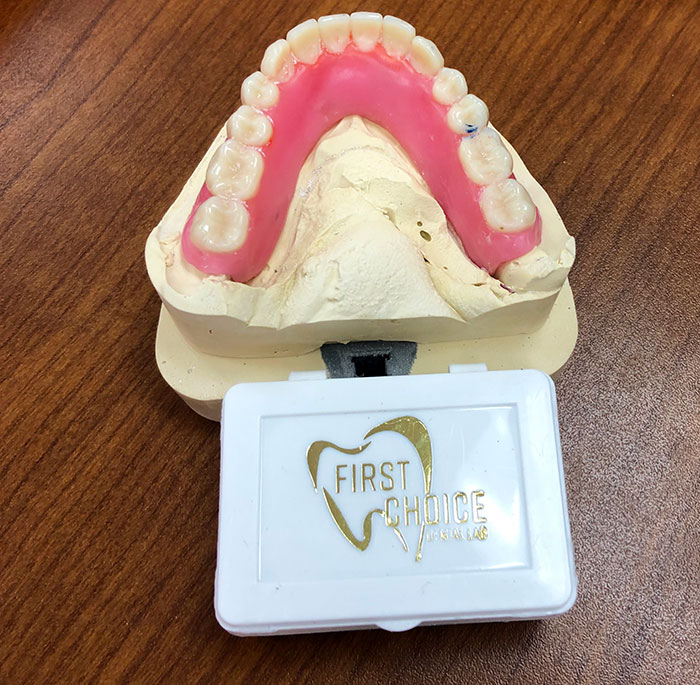The evidence is clear: Your denture-wearing patients should visit you regularly to ensure the best fit and function possible from their dentures.
As bone and gum tissues change and degenerate over time, it’s important to update the fit of dentures. Without proper maintenance, ill-fitting dentures lead to discomfort, loss of function, or even sores of the mouth.
When you and your patient both agree it’s time for a denture reline, here’s what you’ll want to keep in mind.
Denture Relines: Soft vs. Hard
A soft reline is generally considered more comfortable for the patient, and useful for those with tender gums or sore areas of the mouth. However, more adjustments will be needed to get the proper fit.
Hard denture relines involve a similar process but a hard acrylic material is used rather than a soft, pliable material.
Although some dentists are able to conduct relines in-house, it’s common to send the impression to a dental lab for the best results.
Considerations For A Successful Denture Reline
Once you commit to a denture reline, there are several things you should keep in mind.
When the time comes, consider the following:
- Is this a first-time reline? This question is especially important if the dentures are several years old. If they are, border molding to extend the denture may be needed.
- Impression material matters. Usually, you’ll need less material than you might think. Pay attention to how the initial amount of material is forming; that shape will become even more pronounced once it’s placed in the patient’s mouth.
- Include vent holes. Including very small vent holes prevents tissues from compressing as much. When dealing with the maxillary denture, place one hole near the incisive foramen and two more in the tuberosity region. On the lower denture, two holes near the retromolar pads and one at the middle point of the anterior space also is suggested.
- The patient’s bite. Once the posterior border is set, encourage the patient to bite down slowly so you can verify the position of the teeth are correct. For this process, you’ll want to take ‘before’ and ‘after’ measurements. To help with measuring, you can put a small dot on the tip of the nose and on the chin, taking accurate measurements both before and after.
- Reline the upper denture first. If a denture reline is taking place for both upper and lower dentures, do the upper first. Ensure that section remains stationary while the lower section is being fitted. Fitting the upper denture first allows for a more secure fit, as the lower jaw comes up to meet it.
The Takeaways
Dentures are a major part of your patients’ lives, and with proper care, should last for years and years.
Make sure your patients know the importance of annual check-ups, or any time they’re feeling discomfort. Talk to them about the pros and cons of soft and hard denture relining options.
Keep in mind the tips above, from determining if it’s a first-time reline, to measuring the final bite dimensions.
A successful denture relining should guarantee patients are free of sores and pain that often come from ill-fitting dentures. Keep your patients happy and comfortable, and everyone will have a reason to smile.
About First Choice Dental Lab
First Choice Dental Lab is a full-service dental lab with locations in Downers Grove, Il. & Wauwatosa, Wi.
We manufacture & customize quality dental restorations for general dentists. We create smiles based on your needs and budget.
We’re here to help you give your patients a reason to smile!



